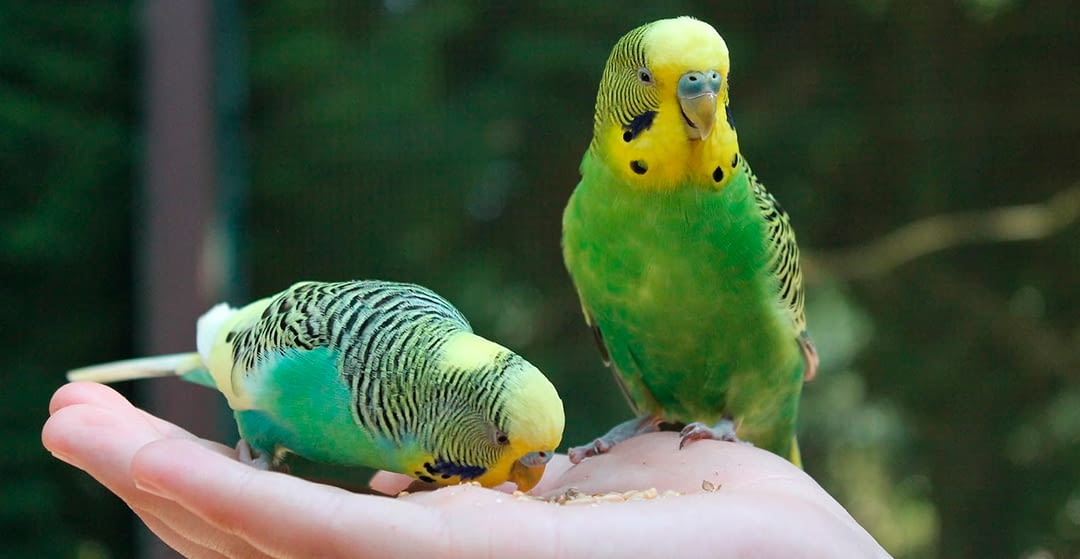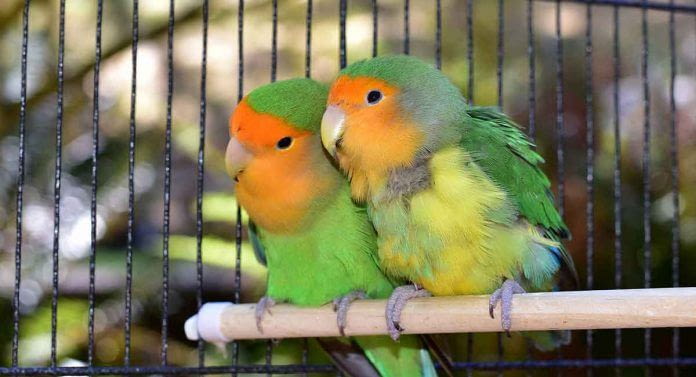
Parakeets, canaries and other birds find joy in company, as evidenced by any animal enthusiast, not just those with space and time limitations. It is important to note that these domestic birds thrive best in pairs and should not live alone.
HAVE DOMESTIC BIRDS ALONE
The classic scene of a canary singing its melody alone in a cage or that of a chattering parrot perched on a perch is gradually being replaced: birds are social beings.
In the wild, they fly in flocks, and the same goes for those cared for by humans; They feel considerably happier in the company of their peers. They share games, grooming rituals and feeding times. These daily activities are irreplaceable, even with the affection and attention of a human.
Many birds spend their lives not only in small spaces, but also in solitude... For this reason, keeping birds alone does not offer benefits. Lonely animals experience suffering and sadness, something that also affects feathered pets. The aggressive and intense play of a bird with its toy, mirror or feeder is actually a deviation from the natural behavior associated with mating.
BENEFITS OF BIRDS AS A PAIR
Having birds as a pair brings a series of benefits that contribute to the well-being and happiness of these charming creatures. First, mutual company provides birds with a sense of security and emotional comfort. By sharing space with a conspecific, they can express natural behaviors and engage in enriching social interactions.
Interaction between companion birds encourages play and joint exploration, stimulating their minds and keeping them physically active. In addition, the company of a partner of the same type, age and gender contributes to minimizing the risk of loneliness and boredom, promoting an enriching environment for your general well-being.
The presence of a partner can also have benefits in terms of emotional health, since birds are social animals that appreciate the interaction and affection of their peers. In short, keeping birds as a pair not only satisfies their natural needs, but also creates a happier, more balanced environment for these lovely feathered beings.

FACTORS TO TAKE INTO ACCOUNT WHEN INTRODUCING A NEW BIRD
After a gradual and careful process of adaptation, even birds that have been alone for years experience revitalization.
It is crucial that the new bird be of the same species as the existing one; For example, if you already enjoy the company of a parakeet, the new member should also be a parakeet. When the new companion shares the species, age and gender of the bird already residing in your home, the risk of potential conflicts is minimized.
Placing the birds in a neutral space, such as a new cage that is ideally more spacious than the previous one, makes the process easier since neither of you are in "their territory." After a few days in separate cages, the exciting journey towards a full and happy coexistence begins.
Even so, coexistence is not free of risks and challenges that owners must take into account.
One of the main risks is the possibility of conflicts between birds, especially if an adequate introduction is not carried out as we have pointed out. Territorial disputes, competition for resources, and in some cases, aggression may arise during the adaptation process. Another risk is unwanted reproduction. If the presence of fertile pairs is not carefully monitored, they may face unplanned breeding. This can lead to overpopulation and additional challenges to the health and care of birds and their baby birds.
Additionally, some birds may become territorially aggressive or develop possessive behaviors toward their partner, which can cause stress and negatively affect their emotional well-being.
In summary, while keeping birds as a pair can be rewarding, it is essential to address these risks through careful planning, supervision and attention to the individual needs of each bird to ensure a harmonious and healthy environment.



